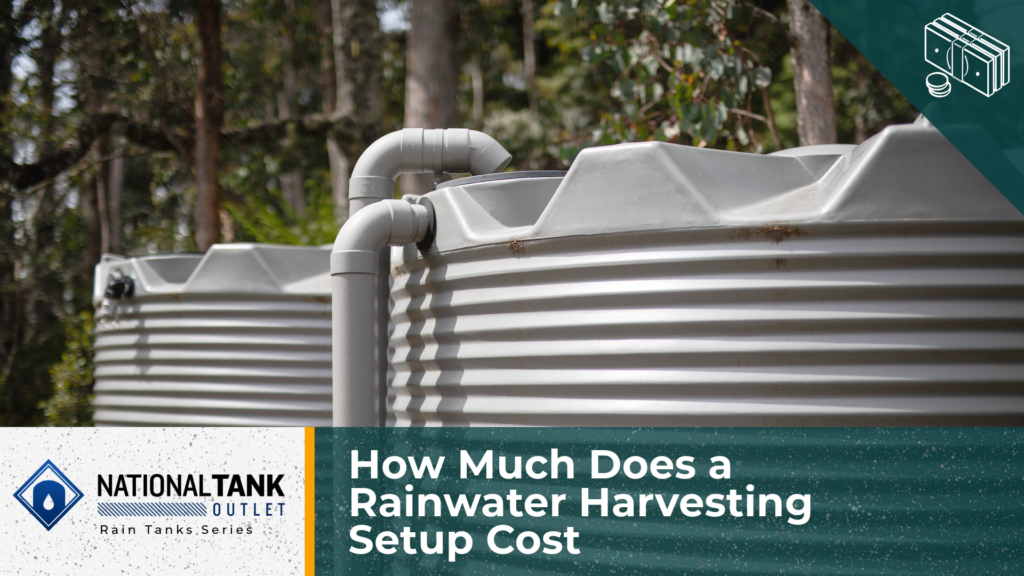
The growing need for sustainable living has made rainwater harvesting more important than ever. With water resources under strain and cost of living always on the rise, many homeowners, landscapers, and even farmers, businesses, schools, and universities are turning to rainwater harvesting as a smart and eco-friendly solution. By capturing and reusing rainwater, the reliance on municipal water systems can be significantly reduced, which can cut monthly water bills and make a real impact on conserving this vital resource.
Whether you’re looking to water a garden or plants, irrigate outdoor spaces, or even use rainwater for indoor needs, such as flushing toilets, cooling systems, or even potable applications if regulations allow, rainwater harvesting is a practical step toward sustainability.
But how much does a rainwater harvesting setup cost?
Well, it depends – it depends on the type of rain tank, whether it’s made from plastic or metal, how many gallons the tank can hold, what accessories will be added if any, and what all is needed to fully set up all the pieces.
This comprehensive guide will walk you through the key expenses involved, available options, total cost expectations, and more – from essential components like rainwater tanks to often needed accessories.
At the National Tank Outlet, we understand that every project is unique, which is why we offer a wide selection of rainwater tanks and harvesting accessories to match your specific needs. From small tanks for small uses to 100,000 gallons large capacity storage solutions for major applications, we provide the market’s top options by today’s most noted manufacturers.
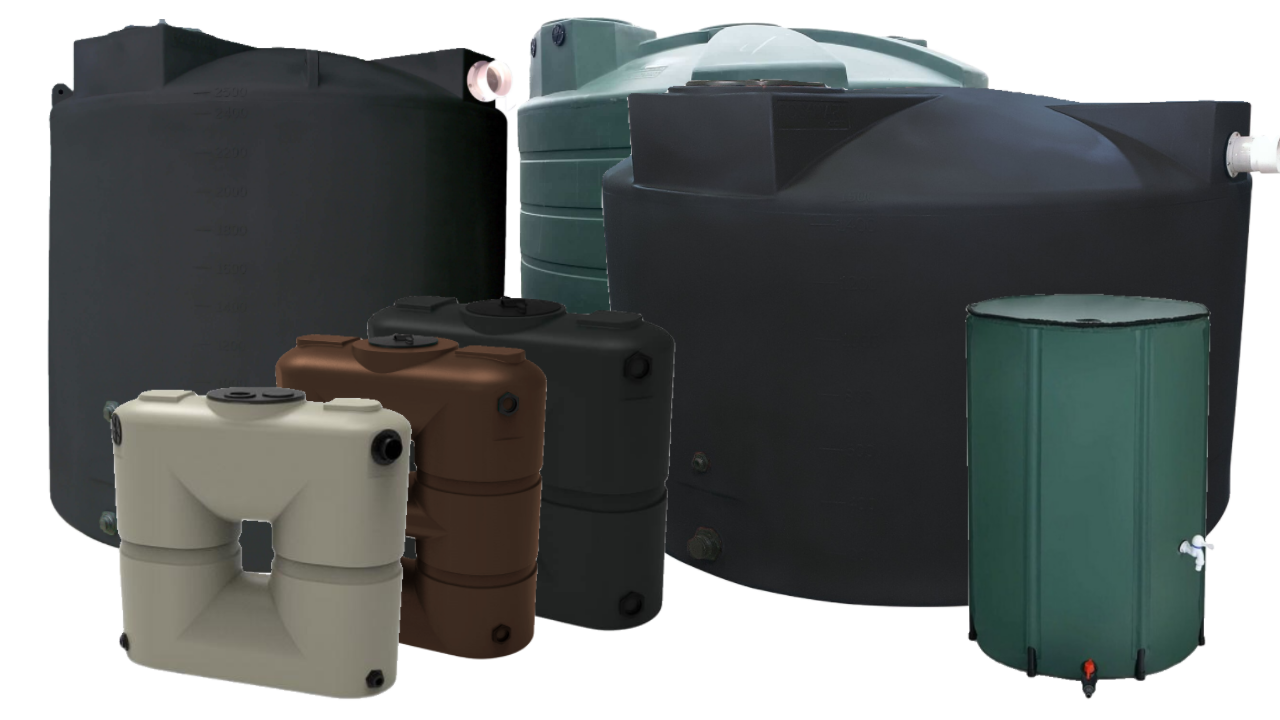
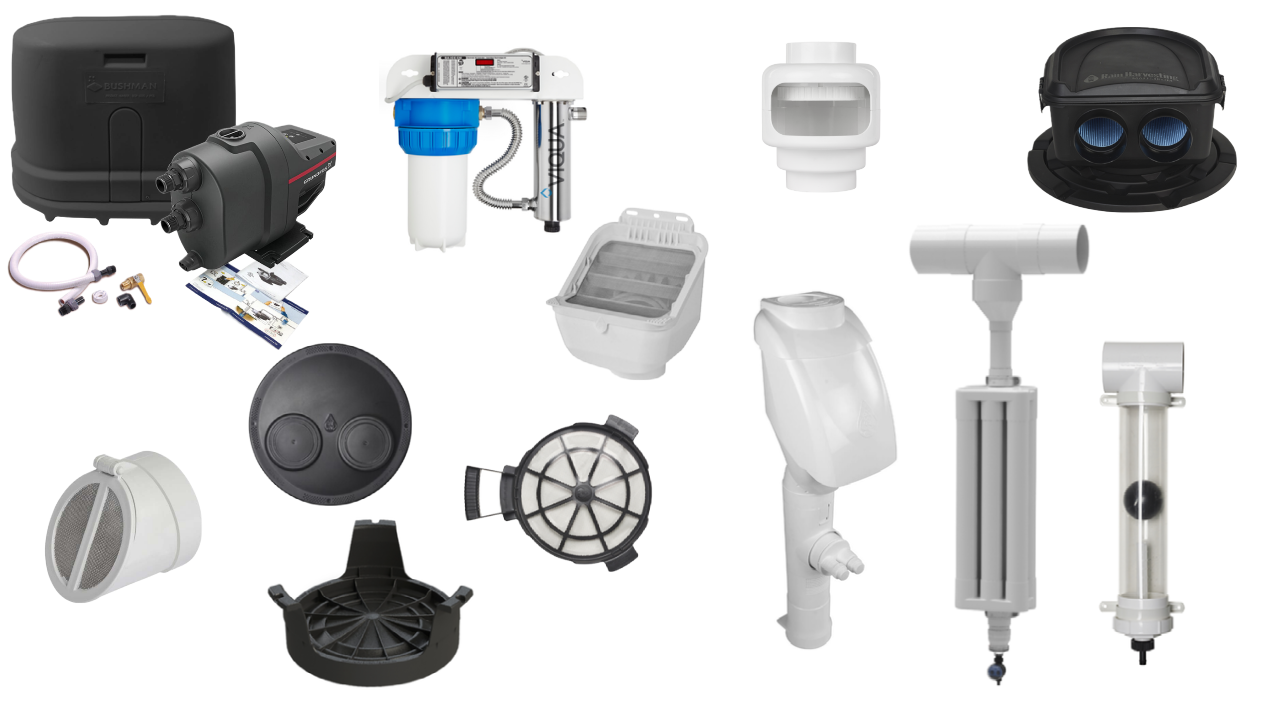
What is Rainwater Harvesting and Why Should You Consider It?
How Rainwater Harvesting Works
Rainwater harvesting is the process of collecting, storing, and reusing rainwater that falls on rooftops or other catchment areas such as awnings, pavilions, and the like. Rather than letting the rain simply run off to the ground, it is channeled to a storage container through a conveyance system — often gutters, downspouts, or PVC pipe.
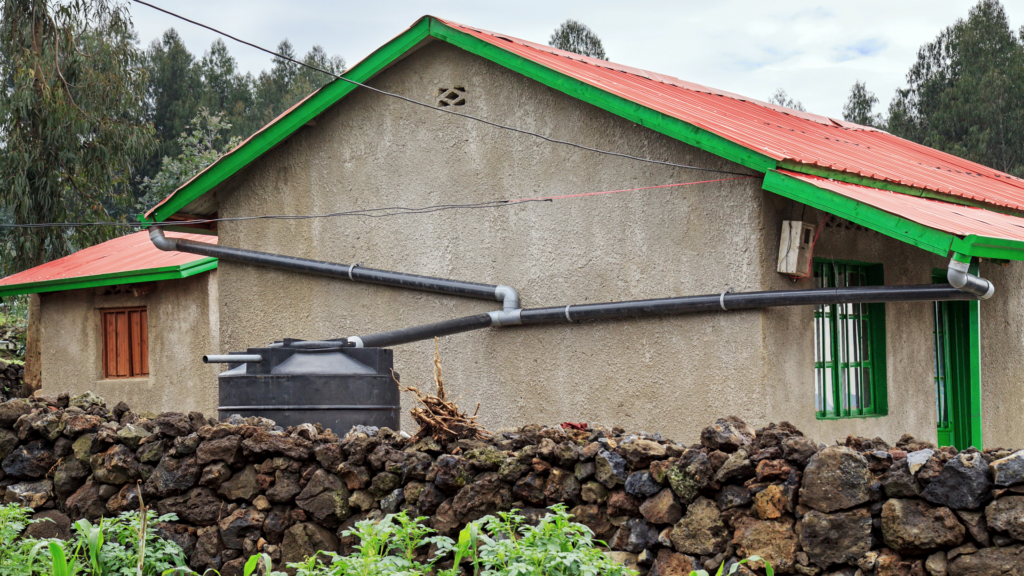
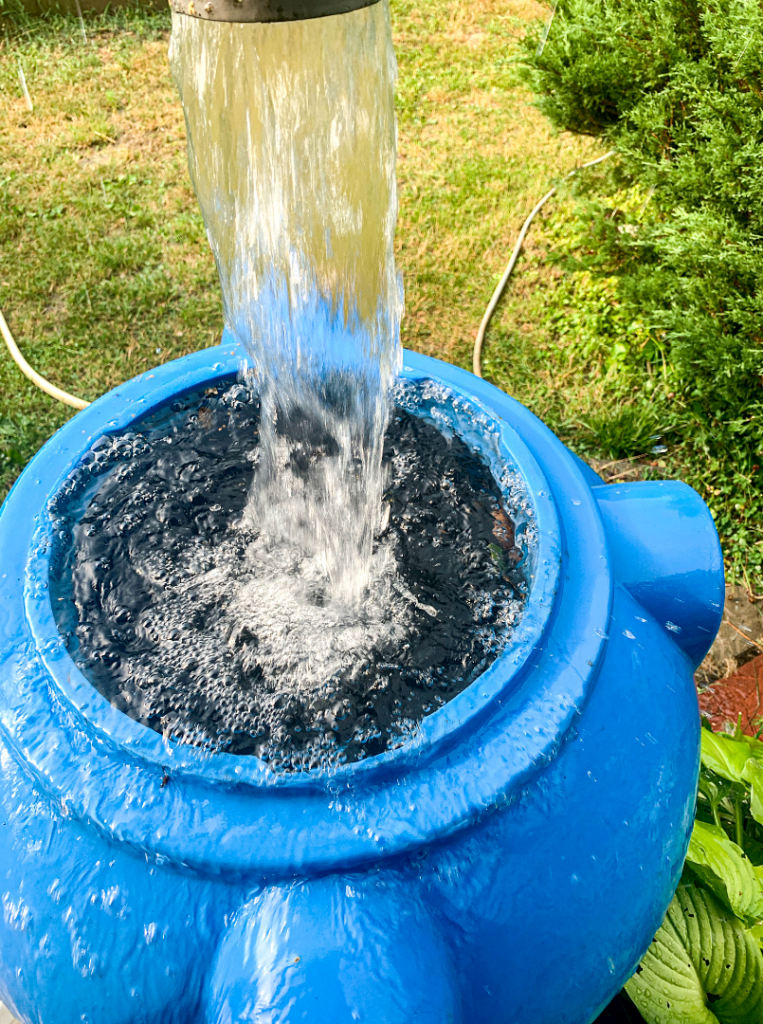
Instead of letting this valuable resource go to waste, rainwater harvesting systems allow you to capture it and use it for different needs around the property depending on the types of accessories and how clean you make the rainwater.
The practice has been steadily increasing in popularity due to its wide-ranging benefits and potential to save money, especially for very large systems and uses.
Benefits for Homeowners
For residential use, rainwater harvesting makes it easier to live sustainably while reaping practical advantages. Imagine having a dedicated supply of water for irrigating your garden, washing outdoor equipment, or even for non-drinking household purposes like flushing toilets or doing laundry. Depending on local regulations and proper water treatment procedures, rainwater can even be filtered and purified for potable uses, giving households an independent, self-reliant water source.
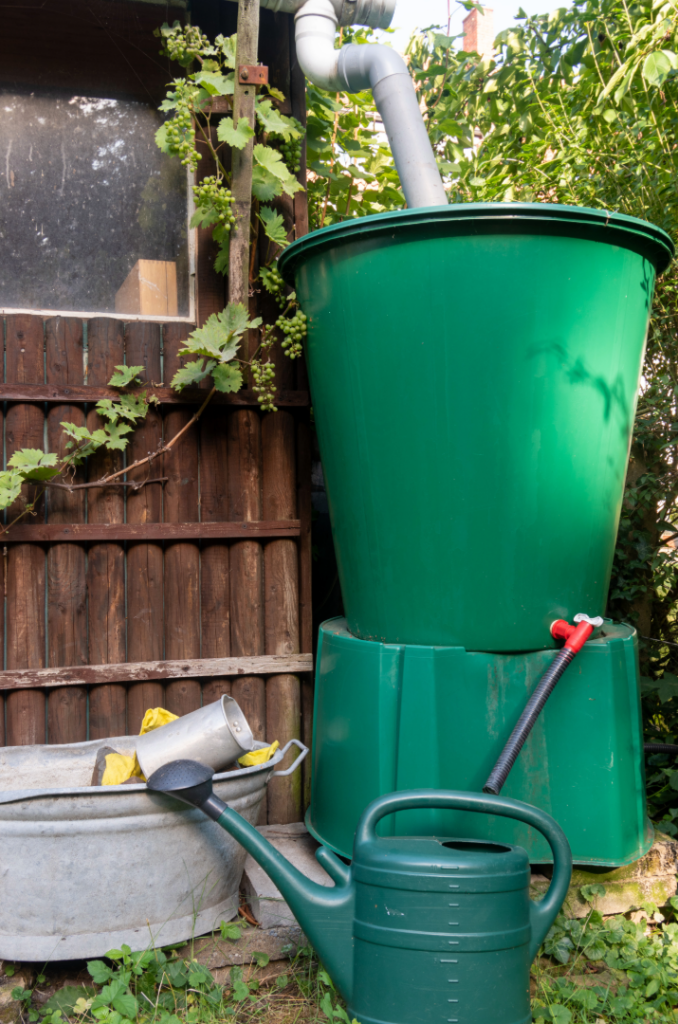
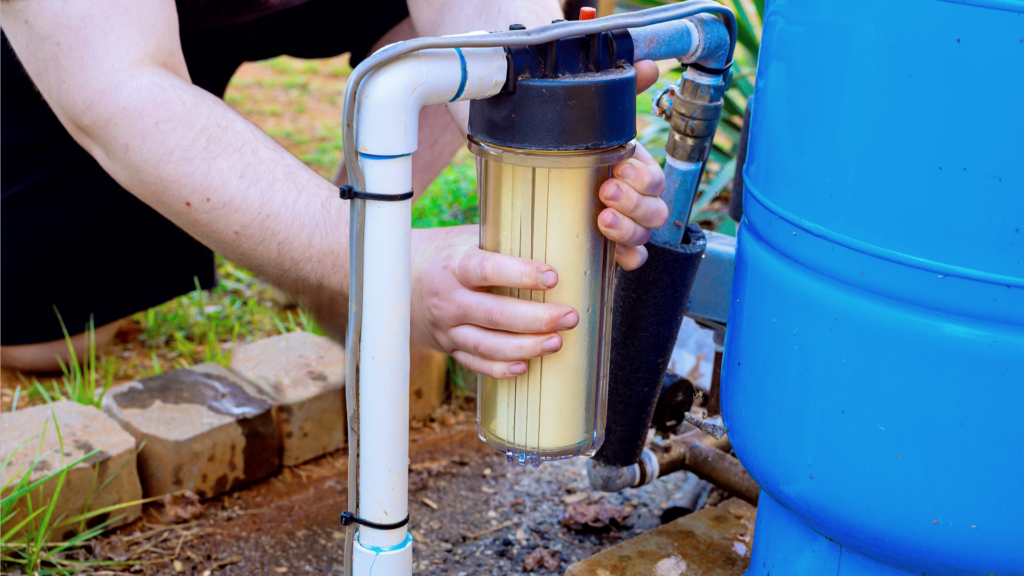
Benefits for Businesses, Organizations, and Off-Grid Living
From a professional standpoint, businesses like farming, ranching, and large facilities in education, government, and healthcare can greatly benefit from rainwater harvesting. Not only does it help reduce the strain on municipal water supplies by providing an accessible and renewable water source, but it can also cut operating costs, as these sectors often use large volumes of water.
For corporations, industrial facilities, and manufacturing plants that frequently have large buildings, many U.S. states are promoting rainwater harvesting as a low impact development (LID) option for stormwater management and compliance with environmental regulations for runoff and pollution prevention.
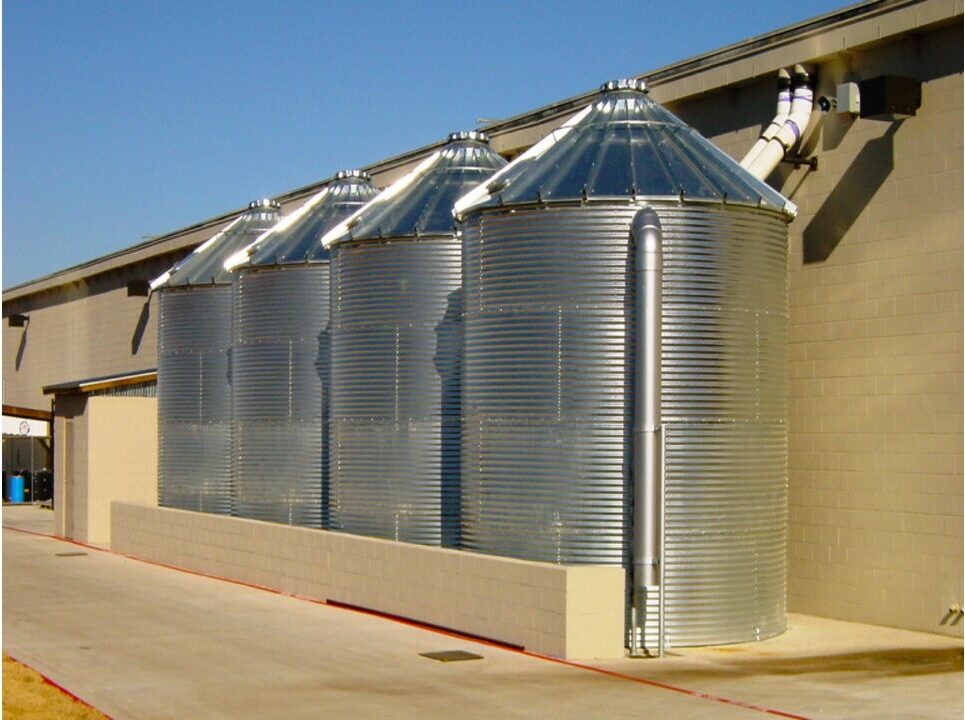
Universities, schools, parks, and event grounds such as stadiums, rec fields, and fairgrounds can use large scale rainwater setups to collect, treat, and pump rainfall to irrigation systems, heating and cooling equipment, restroom fixtures, or water features.
Rainwater harvesting plays a key role in off-grid living too. Those seeking self-sufficiency and personal provision can rely on these systems to reduce or even eliminate their dependence on city water or groundwater. This is especially useful in regions with limited natural water resources or high utility rates.
Environmental Advantages
Beyond the financial benefits, harvesting rainwater is an environmentally responsible choice. It helps conserve available freshwater for other uses, reduces stormwater runoff (and the potential downstream concerns it can cause), and promotes overall better water management.
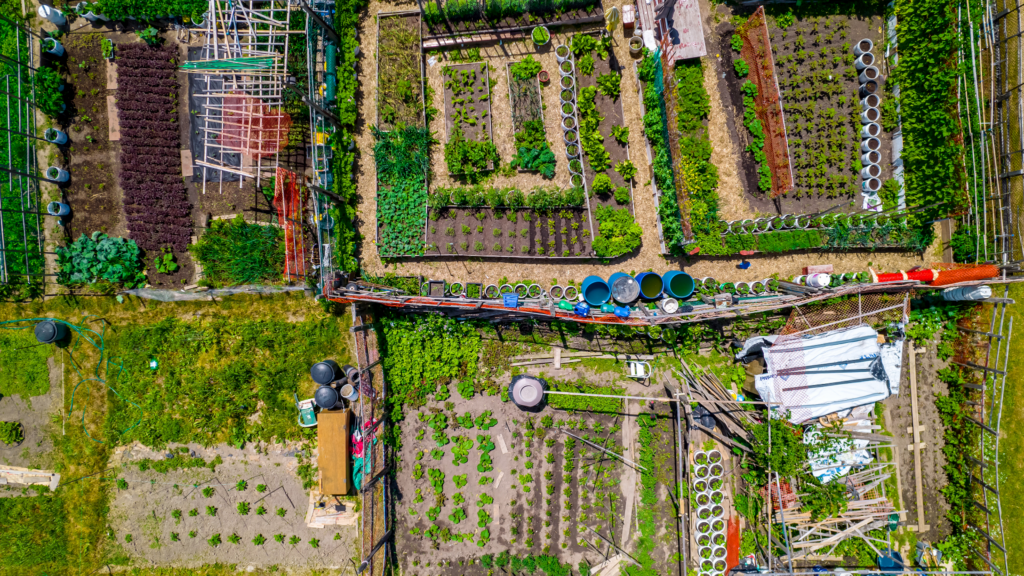
Whether it’s used to water a home garden or community garden, source water for livestock, clean vehicles or equipment, create a backup water supply, or one of its other uses, rainwater harvesting is a versatile and forward-thinking way to make the most of every raindrop.
Rainwater Collection Tanks
How to Select the Perfect Tank for Your Harvesting System.
When it comes to setting up a rainwater harvesting system, choosing the right storage tank is one of the most important decisions — and often the largest and most costly decision. At the National Tank Outlet, we offer one of the best selections of rainwater collection tanks available online to match every use case, big or small, whether you’re collecting rainwater for residential, agricultural, or industrial use.
Available Tank Sizes and Materials
With sizes ranging from compact 90 gallon tanks to massive 100,000 gallon solutions, there’s an option for every project size and budget. Our rainwater tanks are made from one of four different materials and each comes in certain sizes.
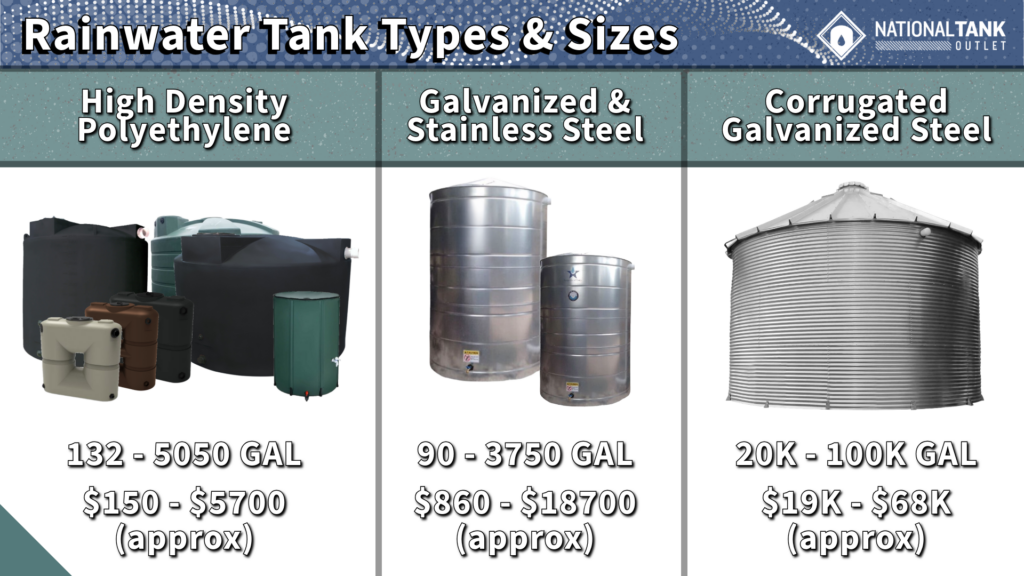
Material options include:
High Density Polyethylene (HDPE) — A synthetic material known for its lightweight yet robust properties, HDPE rainwater tanks are UV resistant, come in dark color options green, black, brown, and beige, and range in sizes from 100 gallons up to 5,050 gallons. Polyethylene tanks are also available in cistern models for underground installation.
Poly rainwater tanks are the lowest cost option with prices from $150 to $5,700 (approx.).
Galvanized Steel — A solid, reliable metal option with a rust-resistant coating, steel rainwater tanks are natural gray in color and range in sizes from 90 gallons up to 3,750 gallons.
Galvanized steel rain tanks are mid-cost options with prices from $850 to $11,600 (approx.).
Stainless Steel — A high quality, highly cleanable, long lasting metal option with natural resistance to environmental stressors, stainless steel rain tanks range in sizes from 90 gallons up to 3,750 gallons.
Stainless steel rain tanks are high-range cost options with prices from $1,300 to $18,700 (approx.).
Corrugated Steel — A trusted material and long service life option, corrugated steel rainwater tanks are very high capacity model options suited for large scale commercial, public, or private applications where significant water volumes are needed; corrugated galvanized steel rainwater tanks range in sizes from 20,000 gallons up to 100,000 gallons.
Corrugated steel rain tanks are the highest cost option with prices from $19,000 to $68,000 (approx.).
Tank Prices and Popular Models
- Small Tanks (Starting Approx. $150–$1,400): Compact tanks between 90 gallons to 330 gallons for minimal water collection and personal needs like garden watering or cleaning.
- Medium Tanks ($1,000–$2,500): Ideal for larger households or small businesses with capacities from 420 gallons to 2,650 gallons.
- Large Tanks (Above $3,000): Designed for large scale applications such as farms, organizations, facilities, or industrial usage with tanks from 3,000 gallons up to 100,000 gallons.
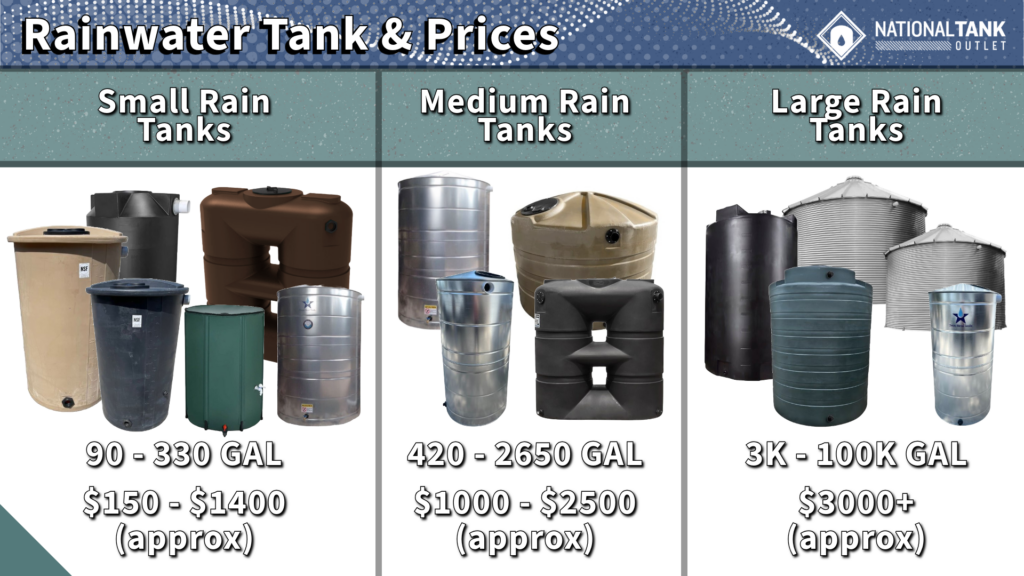
Some of our best selling products include the 325 gallon vertical tank, which is a favorite among homeowners, and the 1,500 gallon heavy duty tank, often selected for medium sized projects. For larger applications, the 4,050 gallon Bushman rain tank, which can be joined to others, or the 40,000 gallon CorGal steel water tank stand out as sturdy and reliable options. All these tanks come with customizable, easy-to-use fittings and connections, making them easy to set up into a rainwater harvesting system.
No matter your water storage needs, NTO Tank has a solution designed to make rainwater harvesting both efficient and affordable to your budget.
Rain Harvesting Accessories
Essential Accessories for Your System
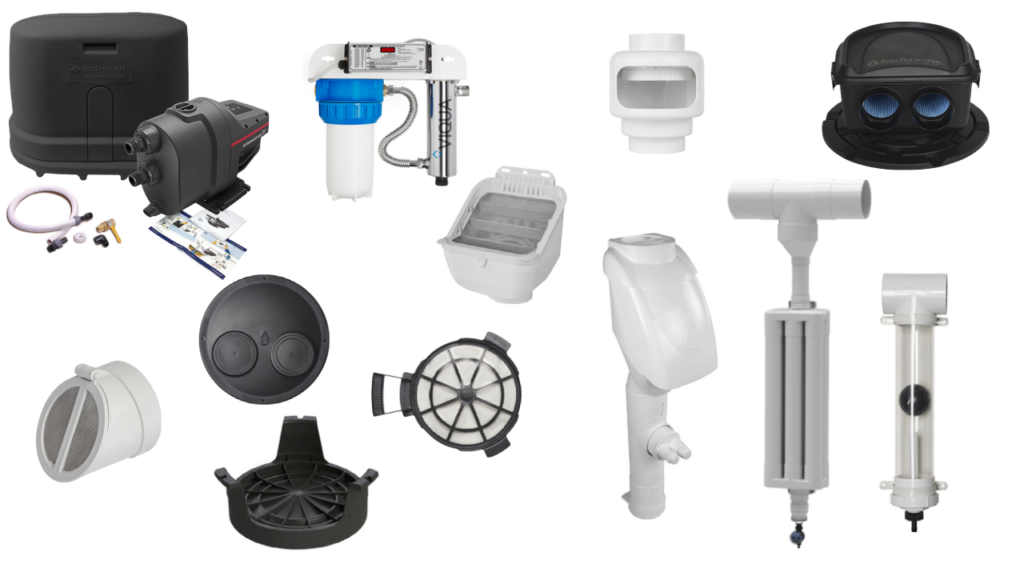
To ensure a clean and effective rainwater harvesting system, you’ll need more than just a storage tank. While rain captured directly from the sky may be okay to drink, when it has flowed over a surface, it can quickly become dirty and unsafe for certain uses. Accessories play a key role not only in maintaining water quality but also in optimizing the collection process. At NTO Tank, we offer the most popular and common rain harvesting accessories designed to keep your system running smoothly and your collected water free from debris and contaminants or even purify it.
Key Accessories and Features
Rainwater harvesting accessories include:
- First Flush Diverters
- Leaf Eater Downspout Filters
- Tank Screens
- Mozzie Stoppa Flap Valves
- Outlet Kits
- Water Pumps
- UV Light Filters
More on all these below
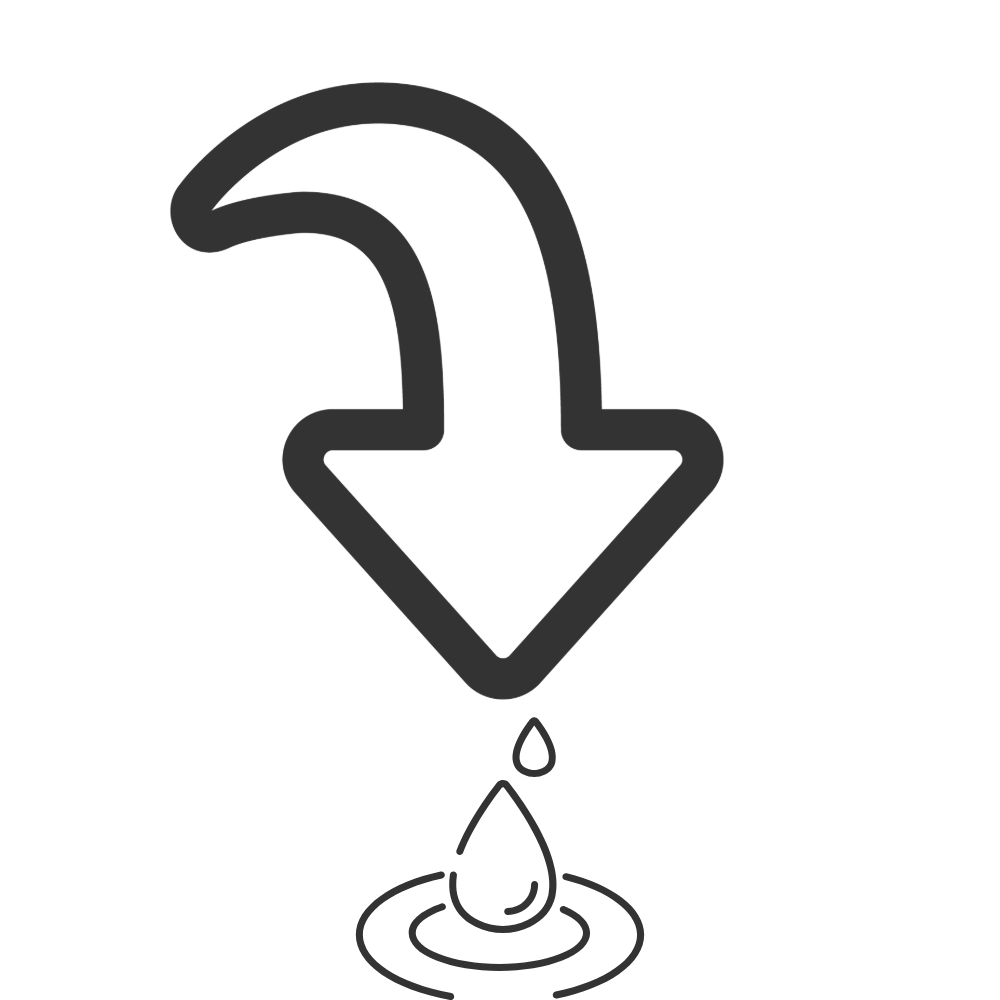
First Flush Diverters: Direct initial rainwater flow, often the dirtiest, away, keeping debris, dirt, and other contaminants out of the rain tank. Prices start around $40.
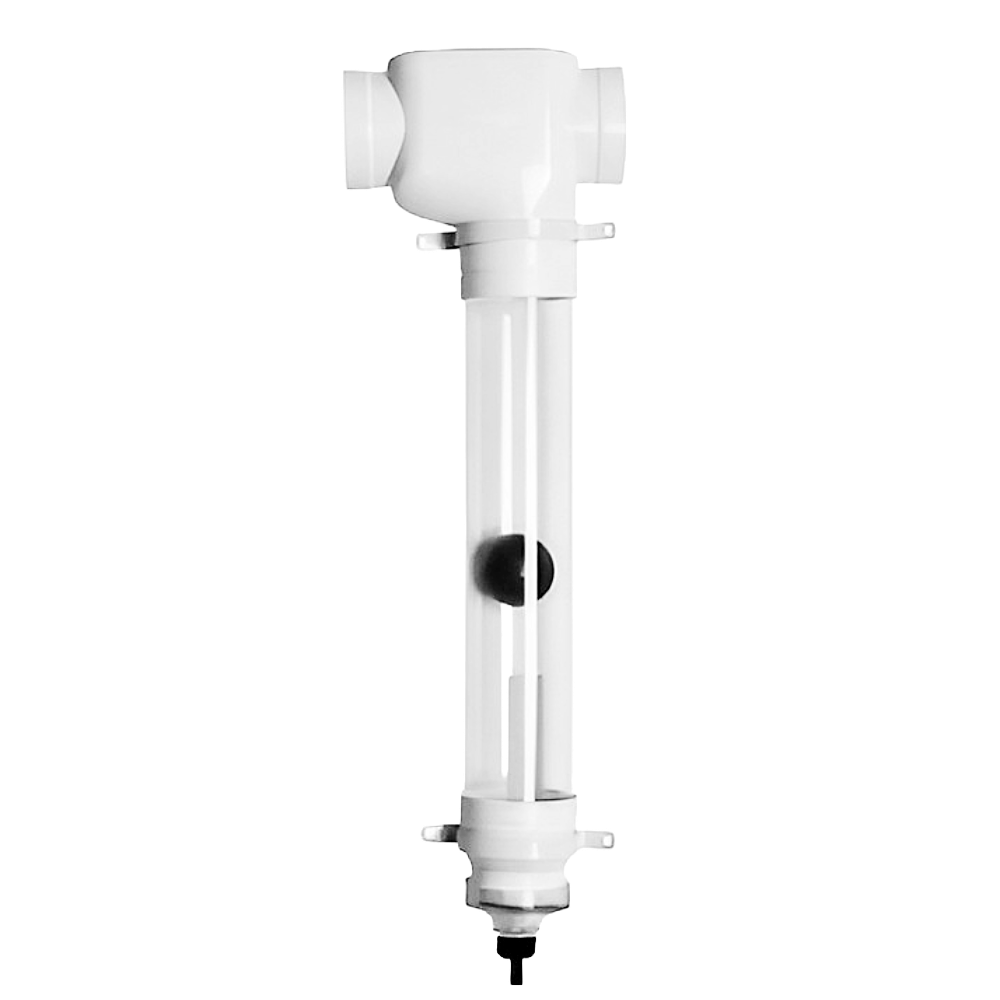
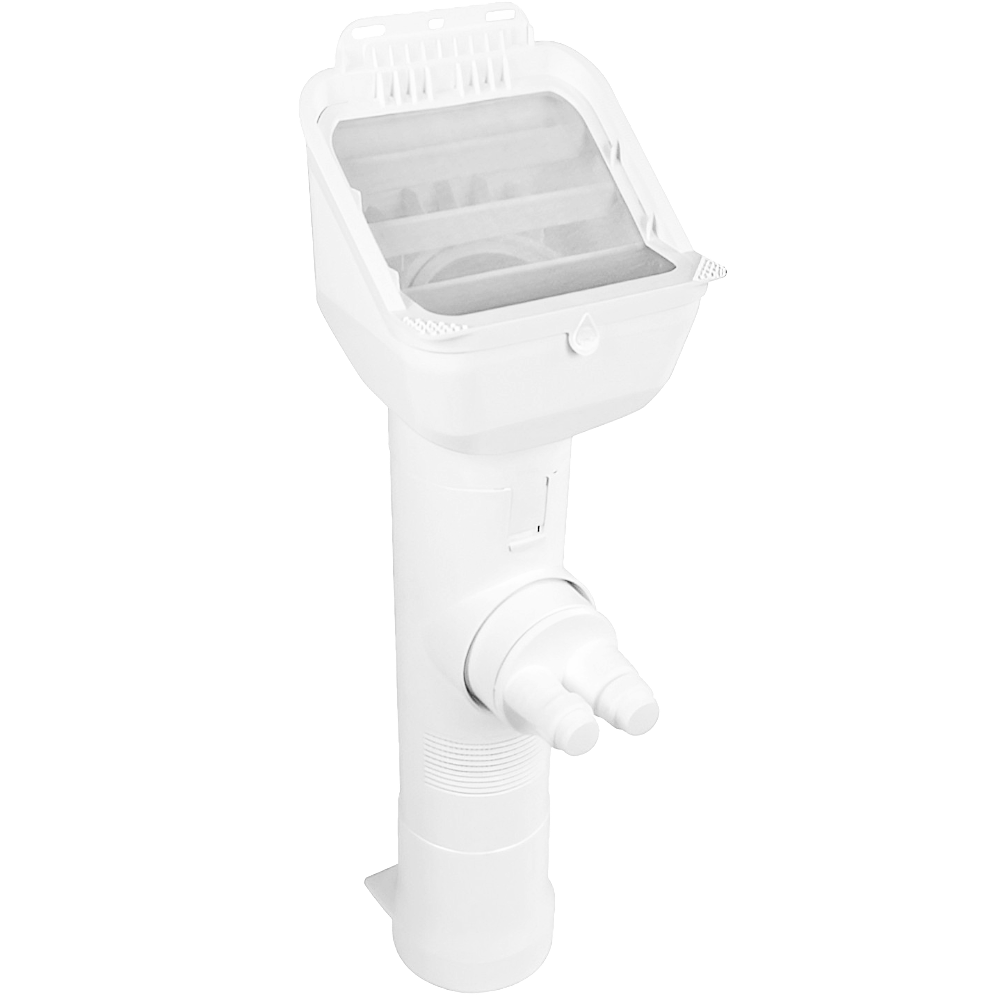
Filters and Leaf Eaters: Prevent larger debris like leaves, sticks, and seeds from passing through the system. Prices start around $40.
Tank Screens and Shields: Block insects, pests, and small contaminants from accessing the tank. Prices start around $10.
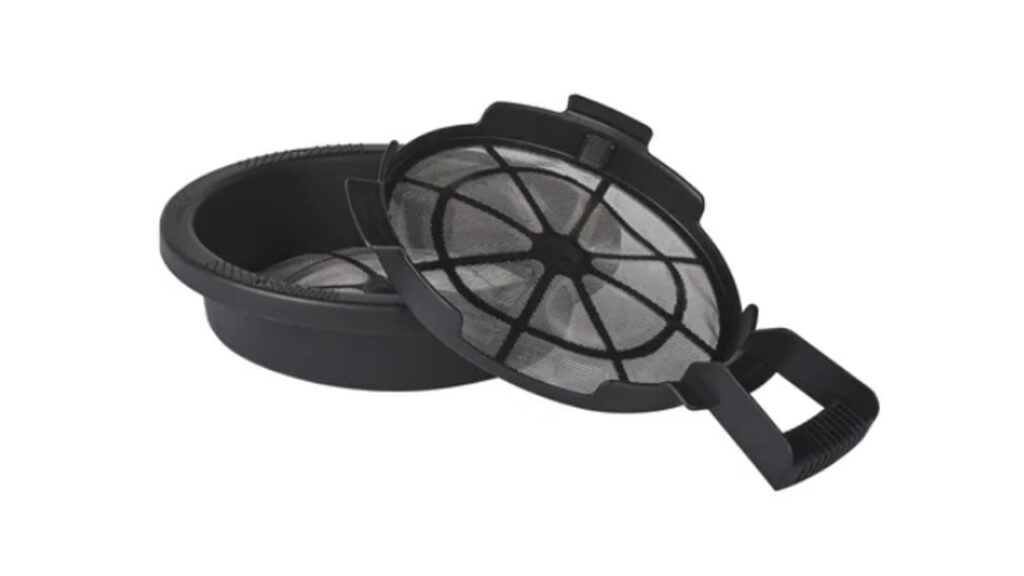
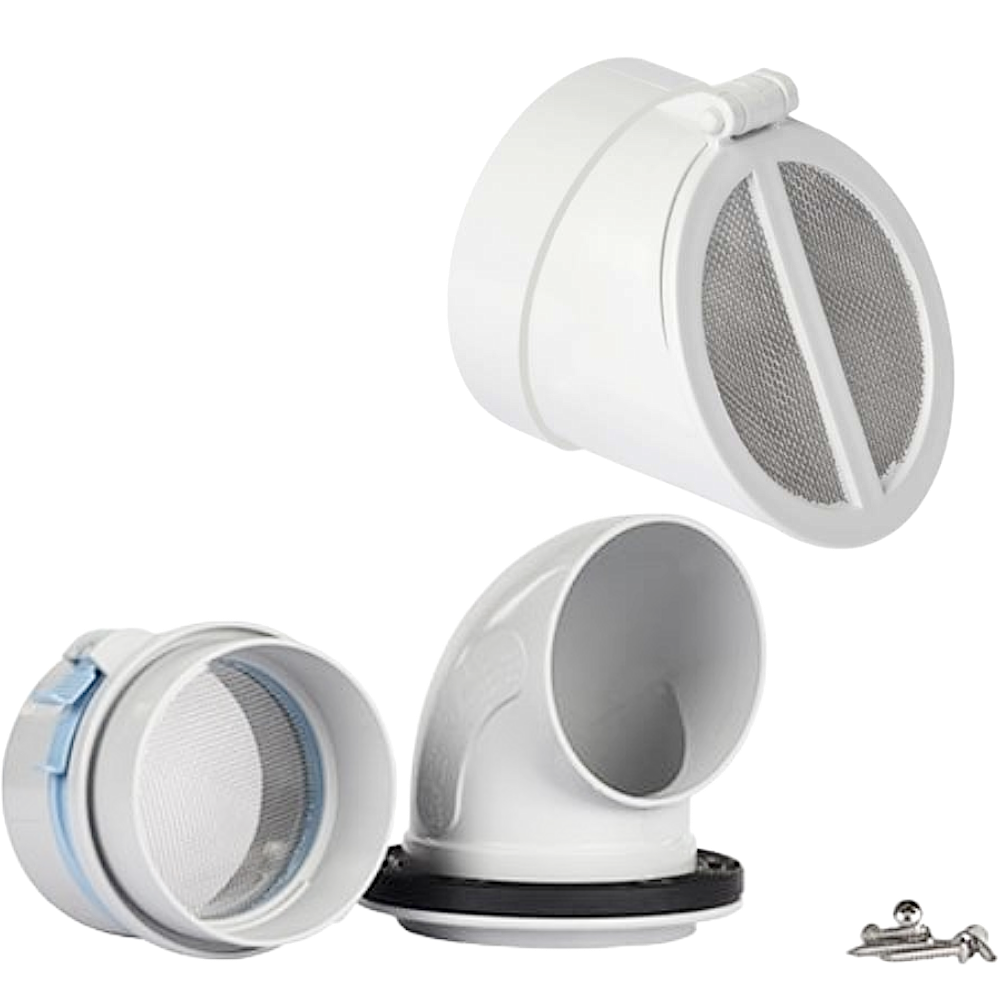
Outlet Kits: Customize how you access water and manage overflow when full. Prices start around $14.
Water Pumps: Used to create water pressure and flow for use with hoses, pipes, spray nozzles, filters, etc. Prices start around $400.
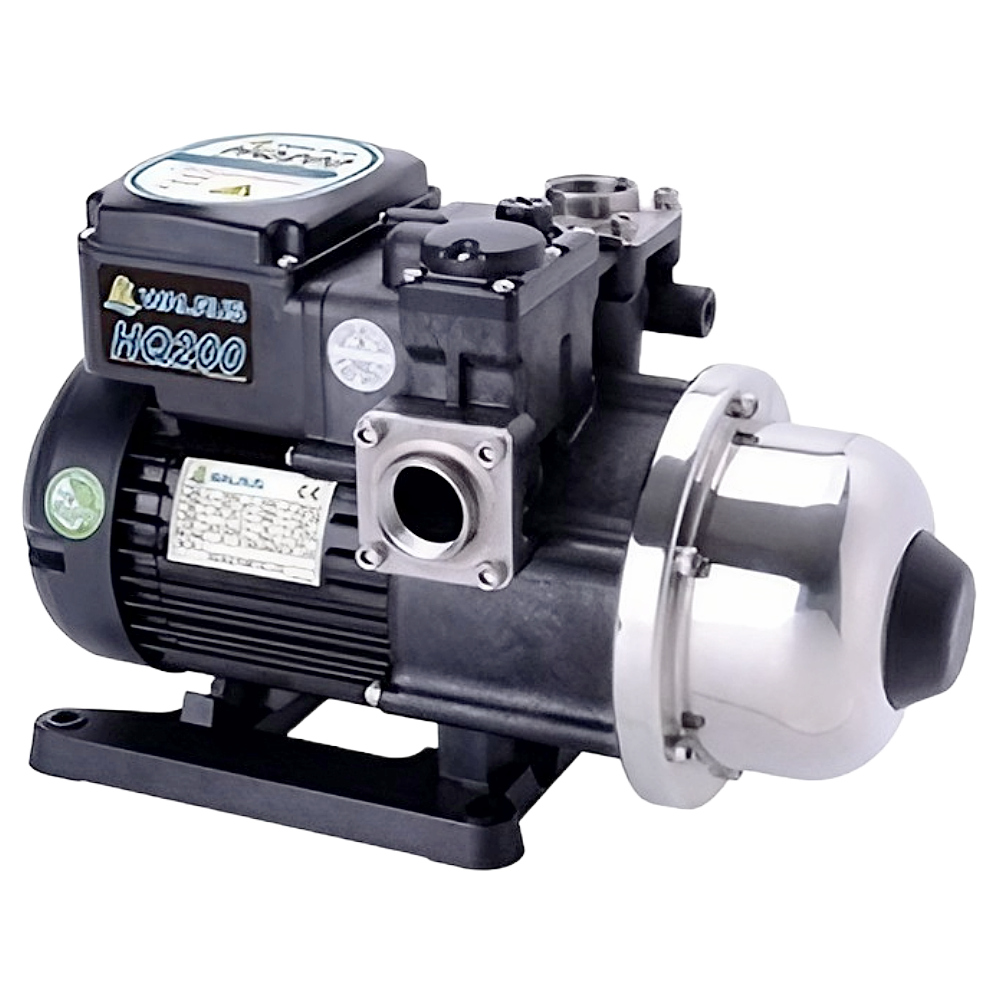
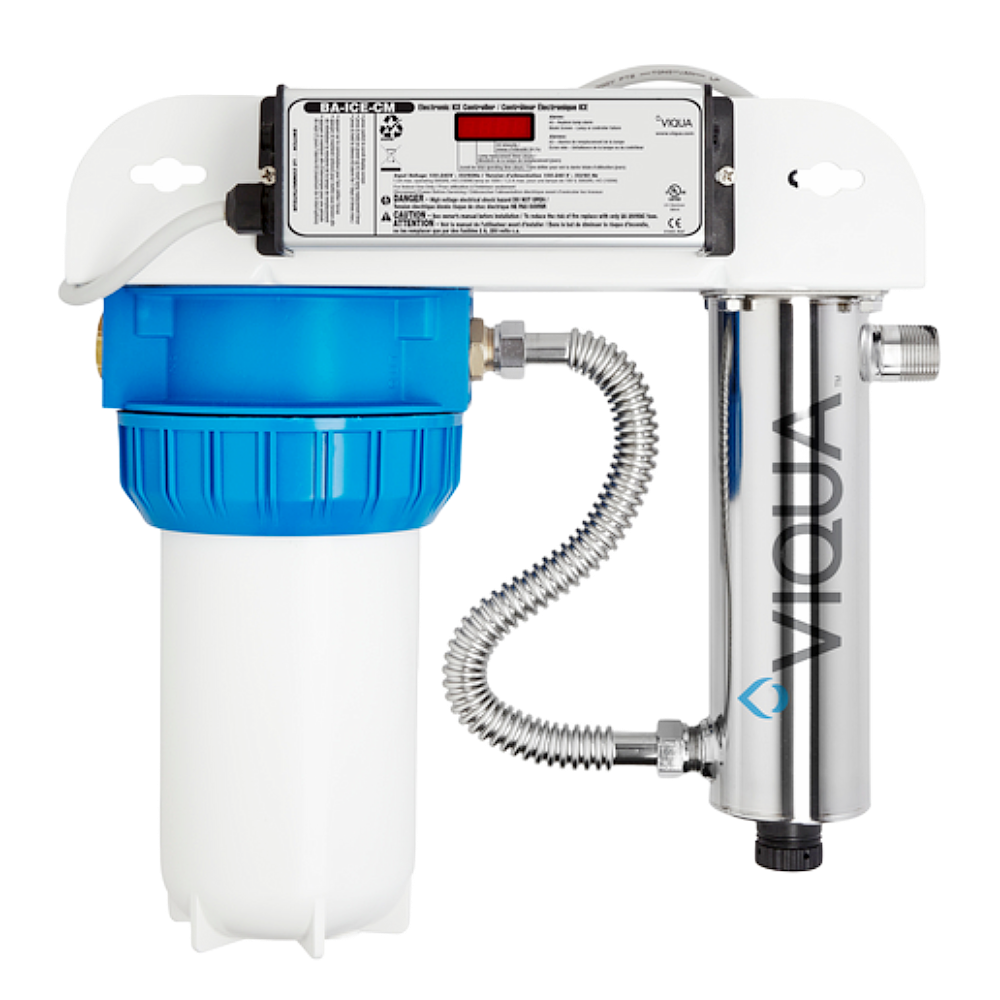
UV Light Filters: Uses ultraviolet (UV) light to eliminate and disable potentially harmful microorganisms and viruses that may be in the water, largely due to animal activity. Prices start around $900.

Note, for basic rainwater collection, these accessories are all optional. If plant debris and cleanliness are a concern, a leaf eater and tank screen should be enough. For high quality uses as well as a water pump and filter, the accessories will be required to keep debris and other contaminants to a minimum.
Pricing Options
- Budget Options (Under $50): Basic filters and screens for entry level setups with mild, regular usage needs.
- Premium Options (Above $200): Commercial-grade first flush diverters and heavy duty kits for advanced systems.
About the Accessories and How They Work
Rain harvesting accessories like first flush diverters, filters, leaf eaters, and tank screens serve as the first line of defense for your water supply. A first flush diverter, for example, redirects the initial flow of rainwater to flush out dirt, leaves, bird droppings, and other undesirables that collect on rooftops before allowing cleaner water to flow into your tank, effectively rinsing the catchment area. Filters and leaf eaters prevent larger debris like leaves and twigs from entering the system, while tank screens block insects, animals, and other small contaminants from spoiling your water supply.
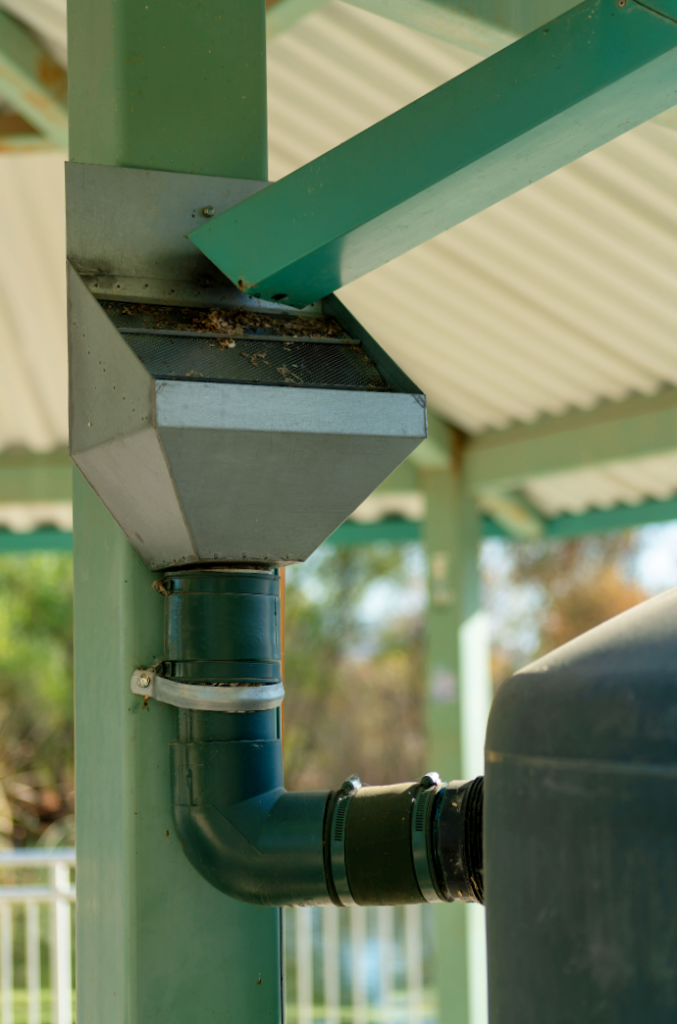
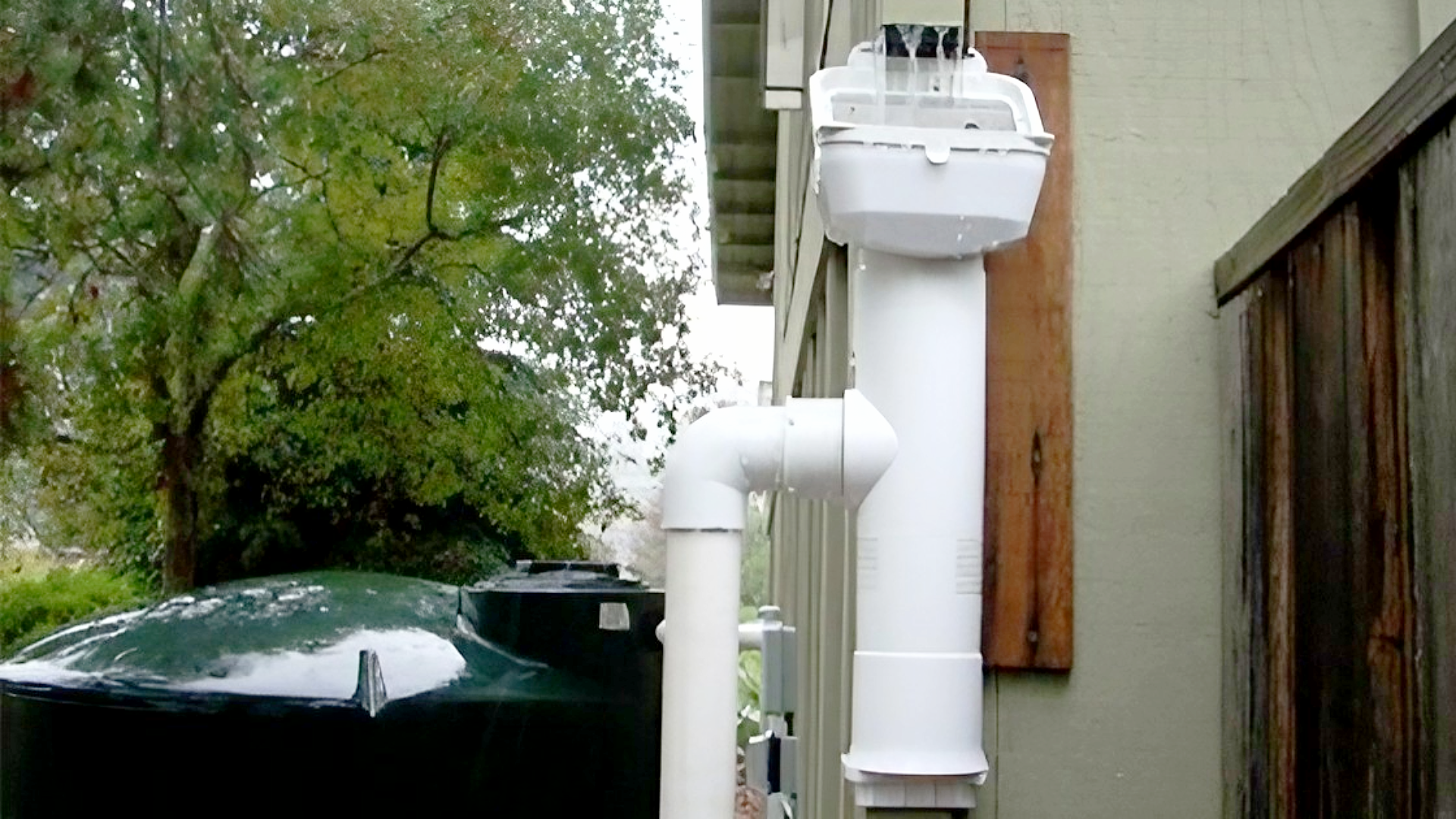
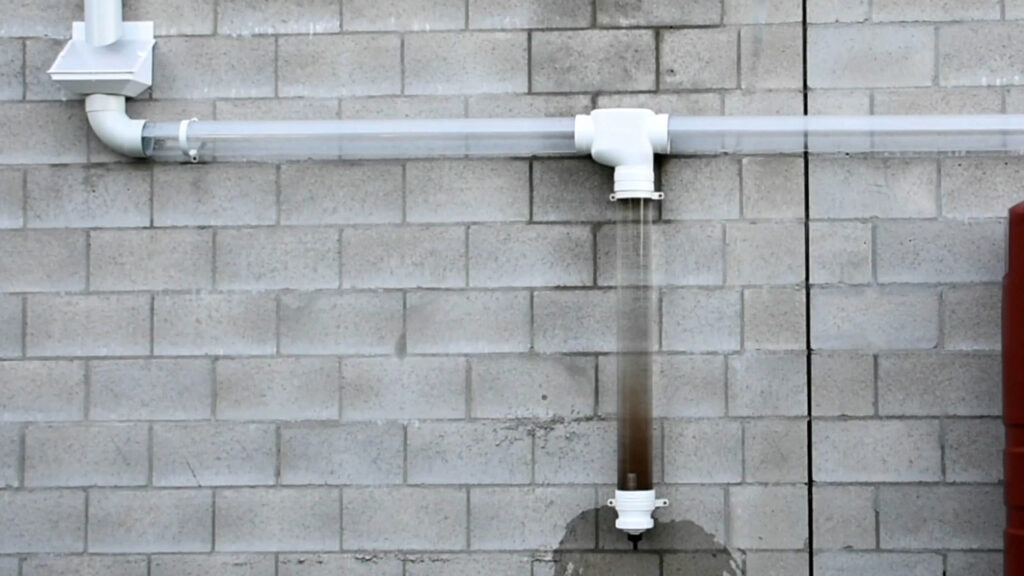
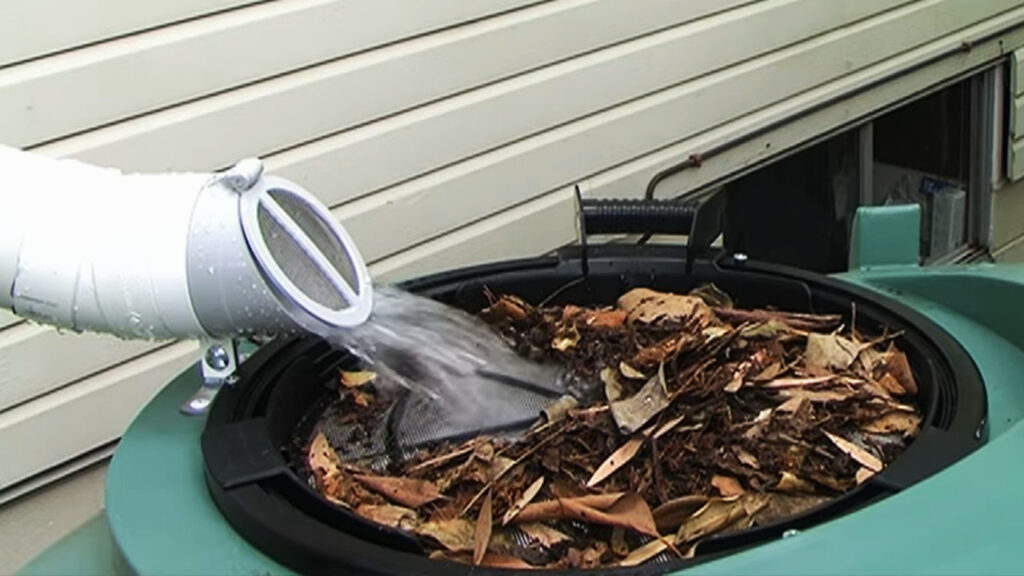
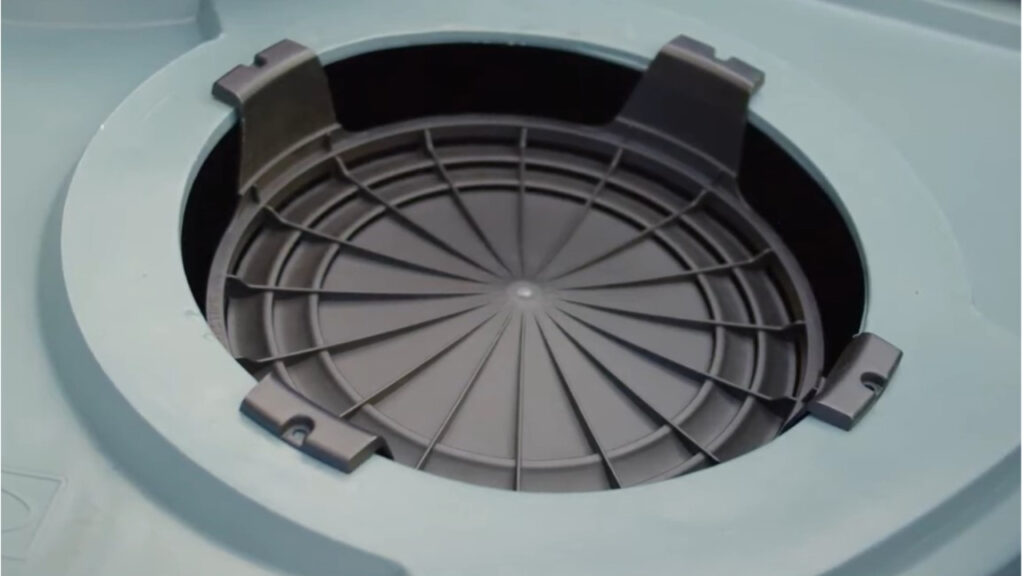
At the National Tank Outlet, we provide the selection of rain harvesting accessories that setups and budgets need. For example, Mozzie Stoppa flap valves are designed to seal off open pipes, such as overflow lines, from your tank to prevent mosquitoes and pests from entering, while air gaps provide pressure balance and prevent backflow while keeping out pests. And outlet kits can help customize your tank’s plumbing, making it easy to access and distribute stored water.
Average System Costs at a Glance
Rainwater harvesting systems come in a variety of sizes and setups, catering to different needs and budgets. Below is a breakdown of typical costs for small, medium, and large systems, along with the components and intended uses for each. Use this guide to evaluate which system might be the best fit for your property and goals.
Small Systems (Up to 500 Gallons)
These are compact setups ideal for residential use and light applications such as garden watering or outdoor cleaning.
| Category | Estimated Cost Range | Components | Intended Use |
| Tanks | $150 – $1,000 | 100 – 500 gallon polyethylene or steel tanks | Water for gardening or outdoor cleaning |
| Accessories | $50 – $150 | Leaf eaters, tank screens, basic filters | Basic water quality maintenance |
| Installation | DIY (Minimal Cost) | Includes connecting downspouts to above-ground tanks | DIY-friendly and affordable |
| Total Cost Range | $200 – $1,200 | Complete system for light, non-potable use | Small households or minimal water needs |
Medium Systems (500–2,500 Gallons)
Designed for moderate usage, these systems work well for larger households, small businesses, and properties with landscaping needs.
| Category | Estimated Cost Range | Components | Intended Use |
| Tanks | $1,000 – $2,500 | 500 – 2,500 gallon polyethylene or steel tanks | Water for lawns, gardens, or cleaning |
| Accessories | $150 – $500 | First flush diverters, pumps, outlet kits, advanced filters | Improved water flow and quality |
| Installation | $200 – $1,000 (DIY) or $1,000 – $2,000 (Professional) | Connection to irrigation systems or multiple fixtures | Semi-complex setups |
| Total Cost Range | $1,350 – $5,000 | Sustainable option for moderate water users | Residential and small commercial setups |
Large Systems (3,000+ Gallons)
These high capacity systems are ideal for farms, industrial facilities, schools, and large scale water consumption needs.
| Category | Estimated Cost Range | Components | Intended Use |
| Tanks | $3,000–$20,000+ | 3,000 – 100,000 gallon polyethylene or corrugated or stainless steel tanks | Potable and non-potable usage |
| Accessories | $500–$2,000+ | Heavy duty pumps, multi-stage filters, UV purification units | Advanced water distribution and purification |
| Installation | $2,000–$8,000 (Professional Mandatory) | Underground piping, indoor system connections | Large scale and regulatory compliant setups |
| Total Cost Range | $6,000–$30,000+ | Long-term solutions for high-volume water management | Commercial or industrial properties |
Installation and Additional Costs
DIY vs. Professional Installation
Setting up a rainwater harvesting system involves more than just purchasing the tanks and accessories — they will have to be properly installed and set up. Installation plays a large part in both the functionality and overall cost of your system. One of the first decisions you’ll face is whether to install the system yourself (DIY) or hire a professional.
But don’t worry, except for large scale systems or those that connect with interior plumbing, installation is often fairly straightforward and can be done yourself. If you find the task difficult or beyond your means, you can hire a handyman to do the work for you.
For complex systems such as ones handling thousands of gallons of rainwater or that supply water inside a building, plumbing codes and regulations are often involved and will require a professional contractor or plumber to perform the work.
DIY Install
DIY Installation will be the most cost effective option for smaller setups, especially if you’re comfortable with basic plumbing, assembly, and a few standard tools. Many rainwater harvesting tanks come with pre-drilled fittings that make self installation easier. Most accessories have also been intuitively designed for an easy installation – some simply slide into place, others require a few screws, while the most work intensive will need some PVC pipe, sealant, and a proper saw for cutting.
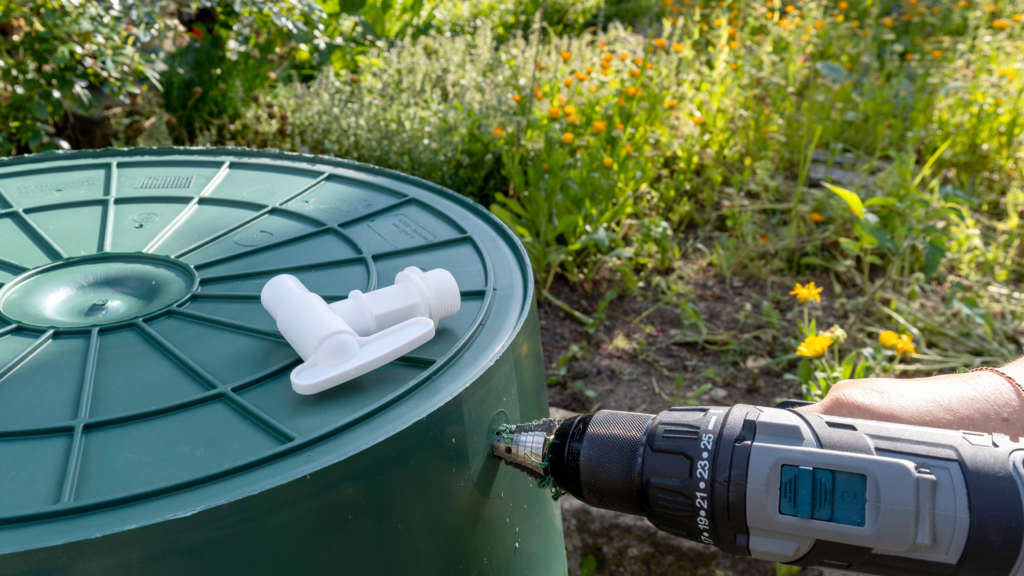
Professional Install
Professional Installation services provide the expertise needed to ensure the system is properly configured and compliant with local codes. The cost for professional installation will range widely depending on the complexity, size, and regional labor rates. For instance, connecting a single above-ground tank with a filter and pump to an irrigation system will cost less compared to installing a large-scale system that connects indoors with pumps, underground tanks, and additional water purification equipment.
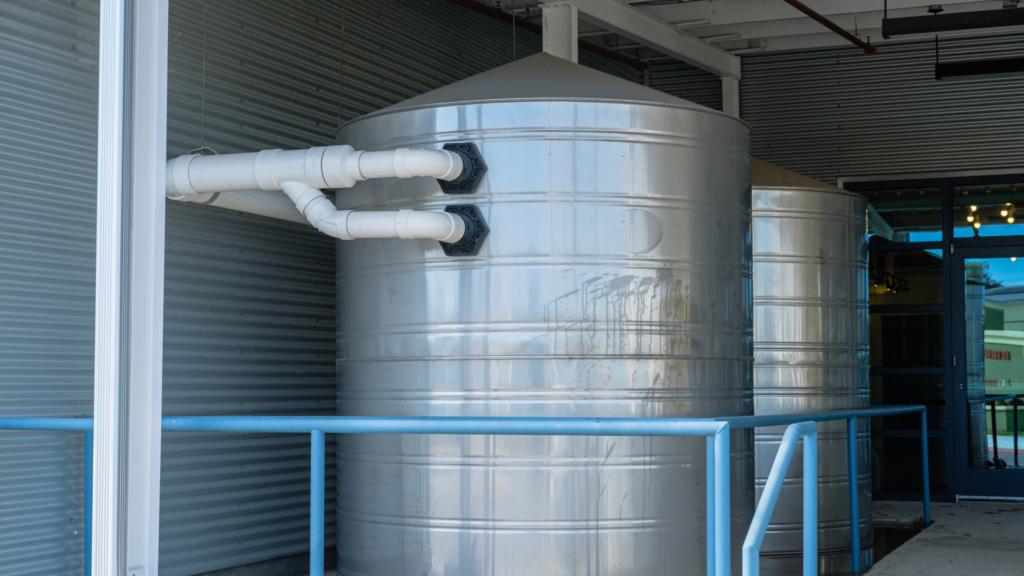
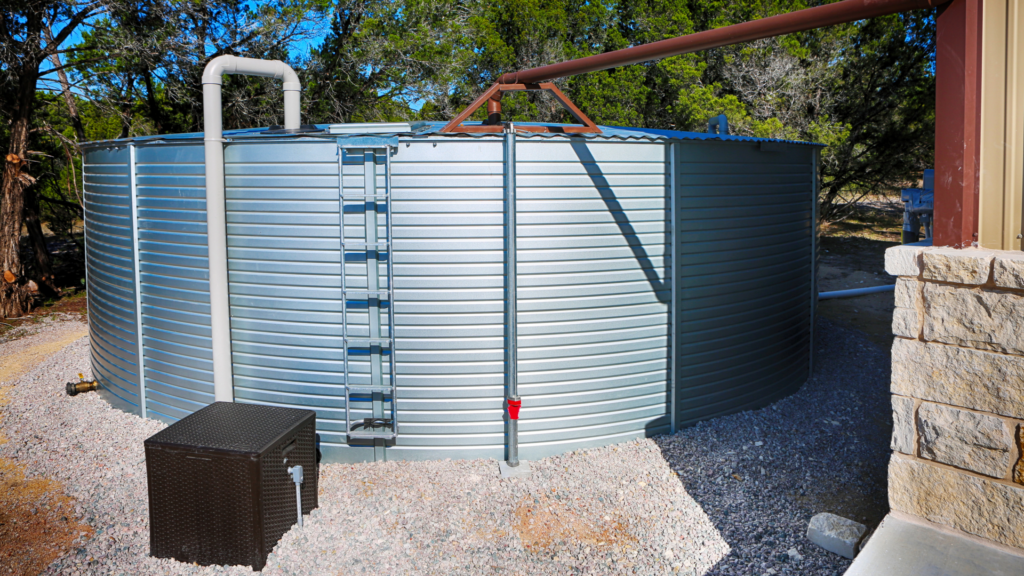
For everything you need to know about rainwater harvesting accessories, check out our Rainwater Accessories Guide.
Additional Costs to Consider
Beyond the installation, there are additional costs to consider for essential components like a water pump, pipes or hoses, and water treatment systems. A water pump, often priced between $150 and $500, is vital if you want to pressurize and move water from the tank to different parts of your property, such as a garden, sprinklers, or spray nozzles. The cost of PVC pipe varies depending on the length and diameter needed, but they generally add between $50 and $300 to your budget for a standard setup.
Water treatment systems, such as multistage cartridge filters or UV purification units, are another important investment, especially if the collected rainwater will be used for potable purposes or even indoor non-potable uses. These systems can range from $100 for basic filters to over a thousand dollars for advanced units.
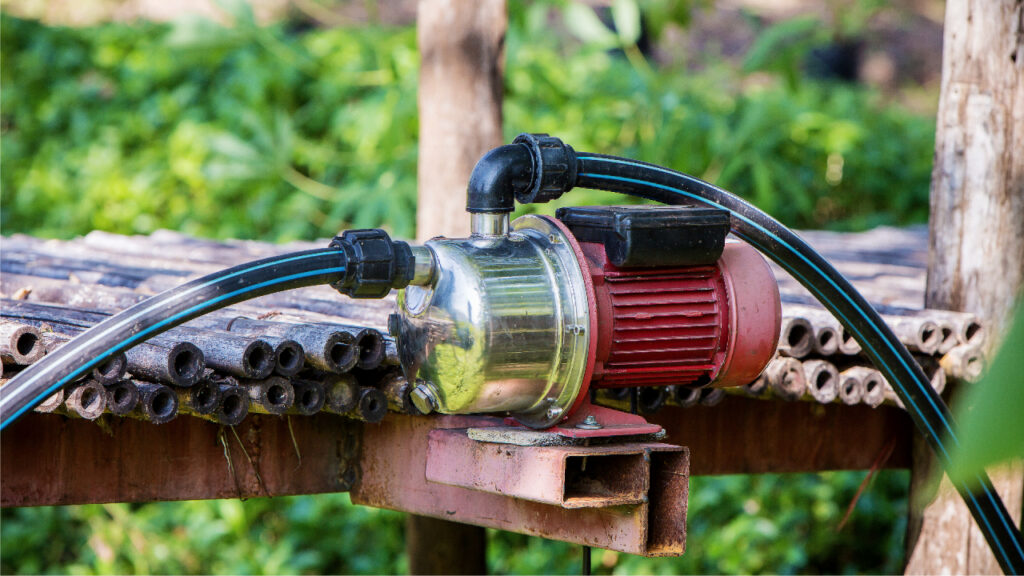
When budgeting for your rainwater harvesting system, it’s essential to account for these additional expenses. While installation and extra equipment will add to the upfront cost, they ensure your system operates to meet your needs. With professional help, proper planning, and high quality products, you can set yourself up for long term water savings and sustainability.
How to Choose the Right Setup for Your Needs
1. Consider Your Water Usage
Have you wondered what size tank you need? Before investing in a rainwater harvesting system, it’s recommended to estimate how much water you’ll need to store as this will directly relate to your total cost. Start by estimating how much water you need by planning what you will use the collected rainwater for. Are you using it solely to water plants, gardens and outdoor spaces, or do you want to supplement property tasks like cleaning, washing, and even drinking water (if permitted in your area)?
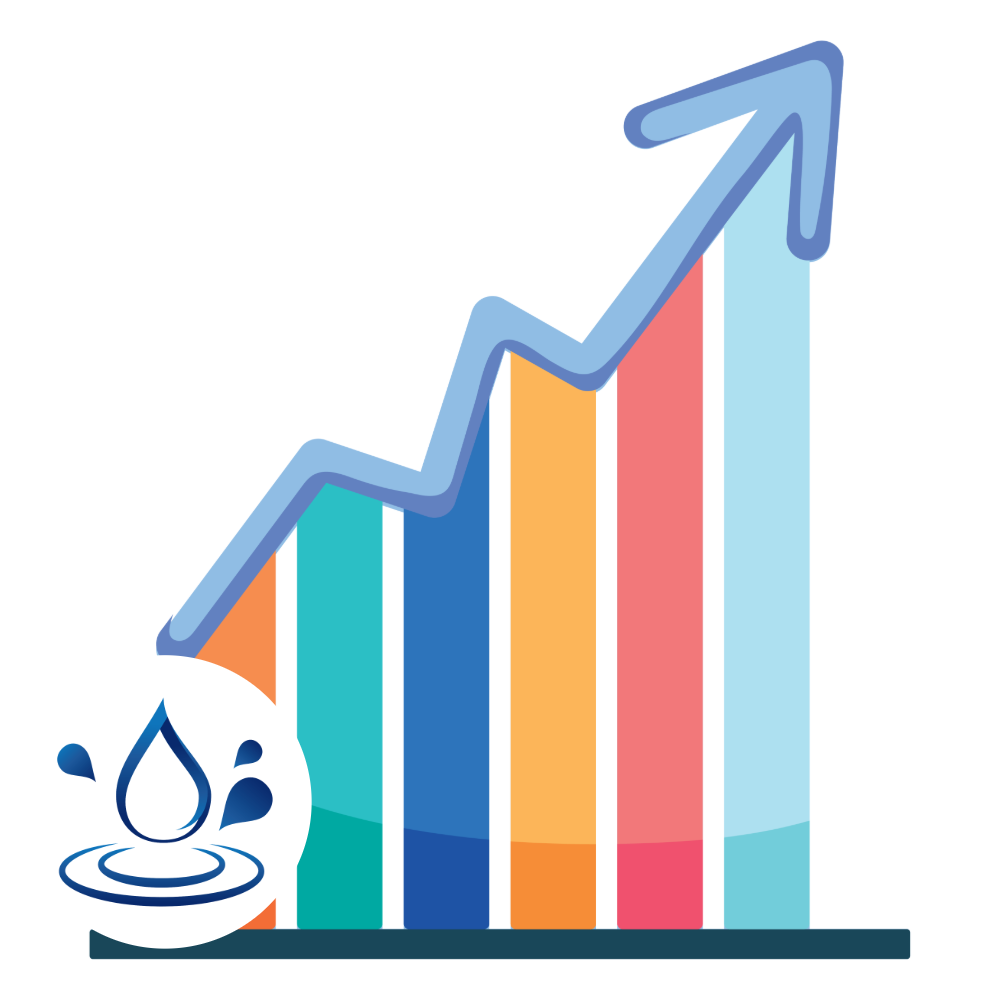
Here’s an easy way to figure out how much rainwater you need to collect and store with this simple formula:
[ Average annual rainfall (in inches) x Roof surface area (in square feet) x 0.623 ] ÷ Usage needs = Estimated rainwater storage capacity
0.623 is the conversion factor to estimate gallons of water from each square foot of the catchment area.
For example, a roof that’s 1,000 square feet in an area with 20 inches of annual rainfall could potentially collect around 12,460 gallons of rainwater each year. If your property uses approximately 30 gallons a day for gardening for 4 months, you’d need a tank with at least 3,600 gallons of storage to supply water during the dry season.
Keep in mind that this does not consider any rain during this time – which is why actual storage needs are very regional and will depend on rainfall throughout the year and whether your system is used seasonally or year-round.
2. Consider Space and Climate Factors
Space limitations and climate conditions are equally important when selecting the right rainwater harvesting setup and can affect costs. If you have a smaller yard and installation space, some sizes may not be an option and you might consider slimline tanks as they are designed to fit in narrow or tight areas. These tanks are space efficient and available in several sizes but due to their unique manufacturing, they can cost slightly more than the traditional rain tank. Alternatively, multiple smaller tanks can be linked together to create a sizable storage solution when a single large tank isn’t feasible — however, multiple tanks often cost a little more than a single tank of the same total size.
Climate
Climate can also play a role in determining the ideal tank size as well as accessory options. If you live in a region with minimal rainfall, you might prioritize a larger tank to store as much rainwater as possible during the wet season. Regions with consistent rainfall may not require a large tank. Since rainfall frequently replenishes supply, smaller tanks may meet your needs.
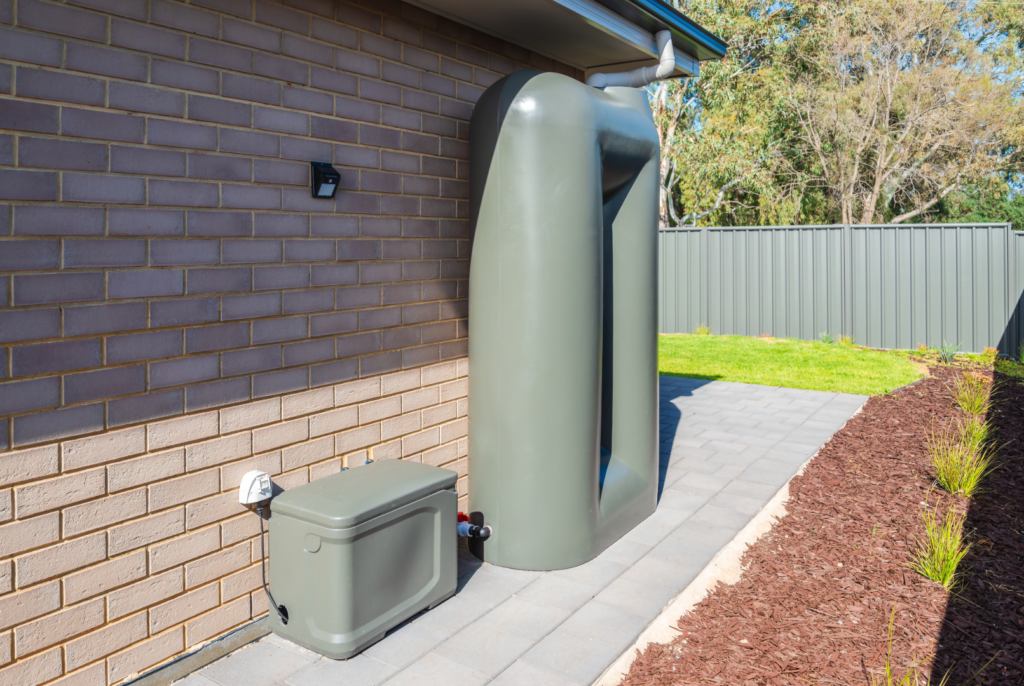
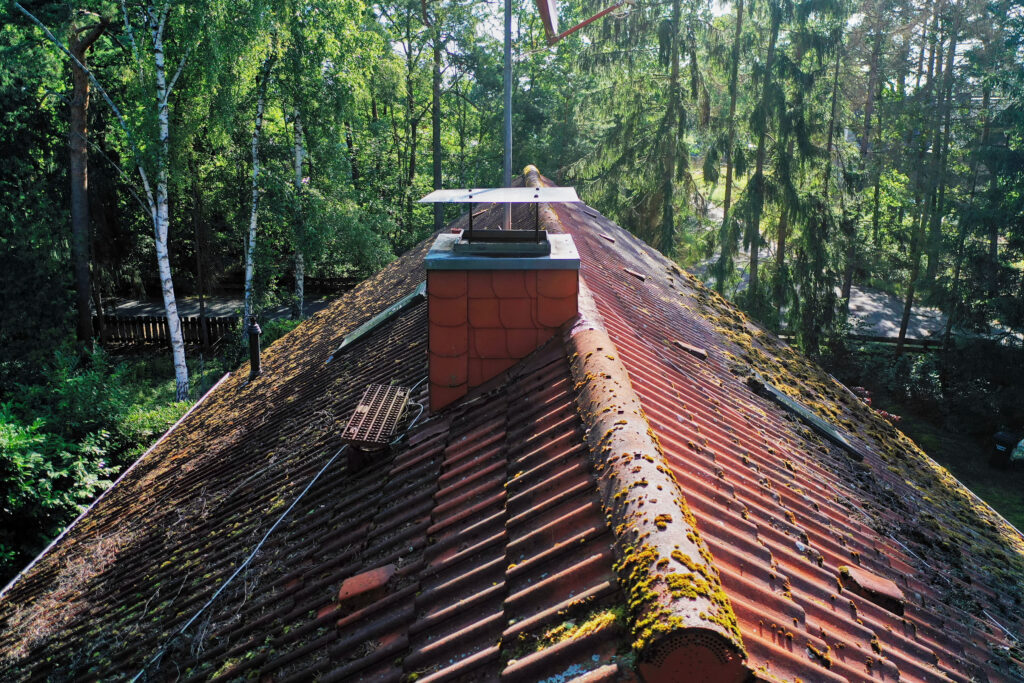
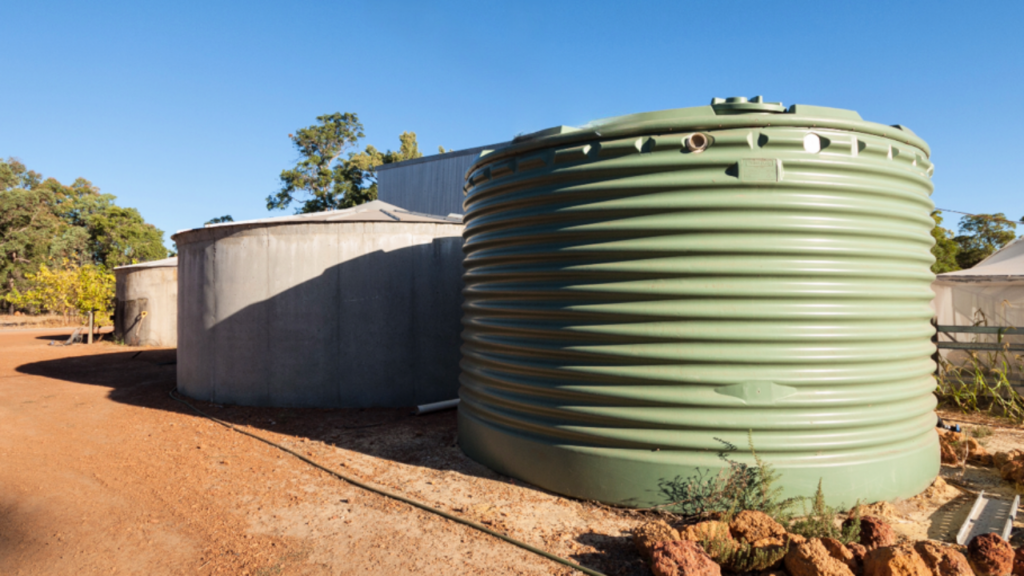
Areas with significant, local, airborne pollution or nearby trees may require specific accessories like first flush diverters and leaf eaters, as well as more regular maintenance of these accessories. For dry climates with intense sun exposure, dark colored UV resistant tanks are essential to the lifespan of your setup and to prevent algae growth.
By carefully analyzing your water needs, available space, and local climate, you’ll be better equipped to design a rainwater harvesting system that fits your budget, property, and personal goals.
The Long Term Savings and ROI of Rainwater Harvesting
Financial Benefits
Investing in a rainwater harvesting system isn’t just an environmentally considerate decision — it’s also a smart financial move. Over time, the savings on your water bill can make up for the initial costs, turning it into a valuable long term investment.

For example, imagine a household that reduces its monthly water bill by $40 using a rainwater harvesting system.
- Small System: For a small system costing around $1,500, the savings would pay for the system in approximately 38 months (just over 3 years).
- Medium System: A medium sized setup priced at $5,000 could achieve full payback in 10.4 years.
- Large System: A larger system worth $12,000 may take closer to 25 years to see a full return on investment, yet it also supports a significant reduction in water consumption and would be more likely a benefit for large families or businesses.
The return on investment (ROI) improves even more when you factor in additional benefits such as lower environmental impact, increased property value, and resilience during water shortages.
For more info and insights like these specifically for businesses, universities, and more, check out our white paper research blog Rainwater Harvesting for Commercial Businesses and Beyond.
Additional Advantages
Also noteworthy, in many locations and cities, there are tax incentives and rebate programs available to homeowners and businesses that invest in sustainable or renewable water systems, including rainwater harvesting. These programs vary but some can lower your upfront costs, often covering a portion of the purchase price for tanks, accessories, and installation, effectively reducing the payback period.
For more on rainwater incentives and regulations, check out:
- Top 5 States for Rainwater Harvesting with Government Supported Incentives
- Rainwater Harvesting Laws, Regulations, and Rights by US State
- 5 Best States for Rainwater Harvesting
- 5 Worst States for Rainwater Harvesting
By tapping into free rainfall and minimizing the reliance on municipal water supplies, rainwater harvesting sets you up for ongoing savings while contributing to a sustainable future for years to come.
Why NTO Tank is the Perfect Partner for Rainwater Harvesting

When it comes to rainwater harvesting solutions, the National Tank Outlet stands out as a trusted and reliable provider. We offer a wide range of affordable tanks in all material types and accessories designed to meet the needs of projects both big and small. And on top of this, we have gone above and beyond to provide valuable and professional level information on rainwater harvesting in our blog.
NTO Tank products are built to last, made right here in the USA by some of the nation’s top manufacturers. Made from durable materials like UV-resistant polyethylene, long lasting stainless steel, or reliable galvanized steel, our tanks can withstand the elements and protect your water supply. Our tanks come in a variety of sizes and designs, including barrel-like, slimline, and extra-large models, ensuring that there’s something for every property layout and use case. Plus, with our stocked fittings, you can adapt our products to match your unique needs.
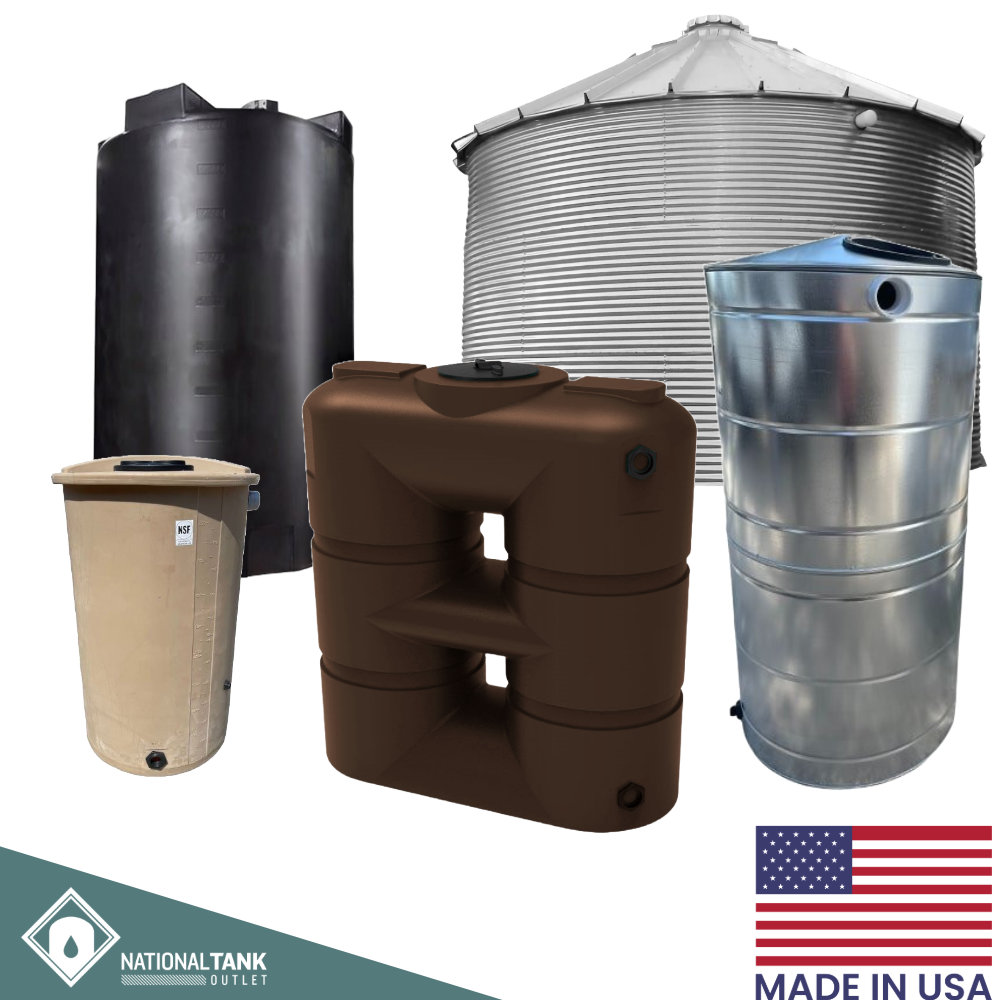
One of the key advantages of partnering with the National Tank Outlet is our commitment to convenience and accessibility. Not only do we offer nationwide shipping at competitive rates, but we also provide exceptional customer support backed by our lowest price guarantee. Our team of experts can work with you to help you select the perfect tank, accessories, and setup for your needs, making your move toward rainwater harvesting as seamless as possible.
By choosing NTO Tank, you get more than just products — you get confidence knowing your system is built from high quality materials and backed by a company dedicated to helping individuals and businesses alike achieve their water conservation goals. Whether you’re setting up a simple backyard rain system or a large scale distribution solution, we have everything you need for success.
Takeaway
Rainwater harvesting offers a sustainable and cost effective solution to reducing water bills, conserving resources, and increasing self reliance. From the wide variety of storage tanks and essential accessories to the flexibility of DIY or professional installation, there’s a solution for every budget, climate, and property size. Whether you’re looking for a compact setup for gardening or a large scale system to support your home or business, there are options to provide both practicality and long term savings.
Investing in rainwater harvesting is an environmentally responsible choice and a financially smart one. With the potential for savings over years of use, the opportunity offered by tax incentives or rebates, and the reliability of high quality products, it’s easier and more affordable than ever to move towards sustainable water usage.
At the National Tank Outlet, we’re proud to provide everything you need to get started. Our expert team is here to help you choose the perfect setup that fits your specific needs and budget. Take the first step toward a greener future today. Explore our affordable tanks and accessories and create the perfect rainwater harvesting setup for your home or project!